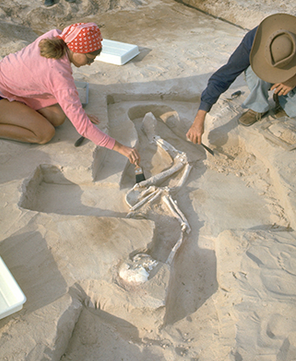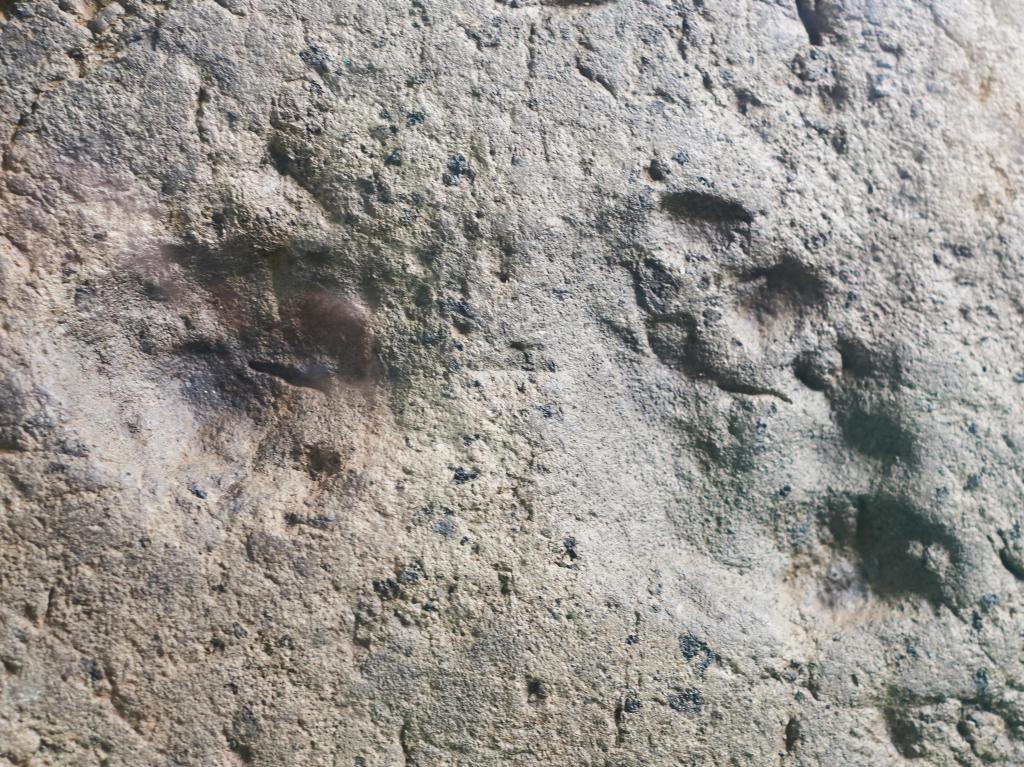An ancient human footprint. Image via Shutterstock.
The remains of the first known Australian have been handed back to traditional owners in ceremony in Canberra this week, and finally laid to rest.
Mungo Man, as he is known, is the skeleton of a male believed to have been originally buried some 42,000 years ago. His remains were unearthed on the banks of Lake Mungo in south-western NSW in 1974 by geologist Dr Jim Bowler. The discovery shocked the scientific world and rewrote the known history of Australian occupation.
Scientists determined that Mungo Man was approximately 170cm and around 50 years old at the time of burial.
For more than four decades Mungo Man has been held in the custodianship of the Australian National University, and since 2015 by the National Museum of Australia.
Paakantji man Michael Young said to ABC: ‘We know as Aboriginal people that we need to bring our ancestors home, and take care of them, we should be the custodians.’
Lobbying for the repatriation of Mungo Man has been a long fought battle, with the decision finally made in 2015 to repatriate the remains to Country. The Mutti Mutti, Paakantyi and Ngyampaa people are the Traditional Owners of the area in which Mungo Man was found.
The remains of 104 other ancient ancestors have also been returned to the Willandra Lakes world heritage area.
Today (17 November), the ancestral remains will be buried on Country in a special ceremony.

Dr. Wilfred Shawcross, right, and the late Anthea Carstairs, left, excavate the remains of “Mungo Man” in 1974. Photo: AP Photo/University of Melbourne, HO
Milestone for Aboriginal reconciliation
About 80 traditional owners, department heads from the New South Wales Office of Environment and Heritage, museum officials and the 88-year-old Bowler – who rediscovered Mungo Man’s burial site – met on Wednesday this week at an industrial complex car park in the Canberra suburb of Mitchell for the handover.
The casket containing Mungo Man was crafted out of 8,000-year-old river timber donated by Bowler.
Bowler admonished authorities for the near-collapse of the repatriation process. ‘There was huge neglect from the state and federal governments,’ he said.’If there was a message left behind by Mungo, it would be learning from each other.’
Speaking at the ceremony was 64-year-old Barkandji elder, Warren Clark from Mildura, who said the journey of repatriation had been an emotional one. ‘This [Canberra] is not home for me, it is not home for our ancestors, either – and I’m sure their spirits won’t rest until they are buried back on our land … Today holds great significance for the Barkandji clan and other tribal groups.’
Mutti Mutti Elder Mary Pappin added: ‘It’s been a long road for our people, a lot of our old people have passed on now that started this same fight that we’ve had.’
ANU Pro-Vice-Chancellor, Professor Richard Baker, said the university apologised to traditional owners for the distress caused by the removal of Mungo Man’s remains and the suffering of the ancestors.
‘On this historic, sad and solemn occasion we acknowledge that we cannot change the past, but we, of course, have to learn from it. Today marks the beginning of a process of moving forward together in a more respectful way.’
Only last month two female ancestors were returned from Canada and Germany to their traditional family groups, their spirits to be returned to Country.





